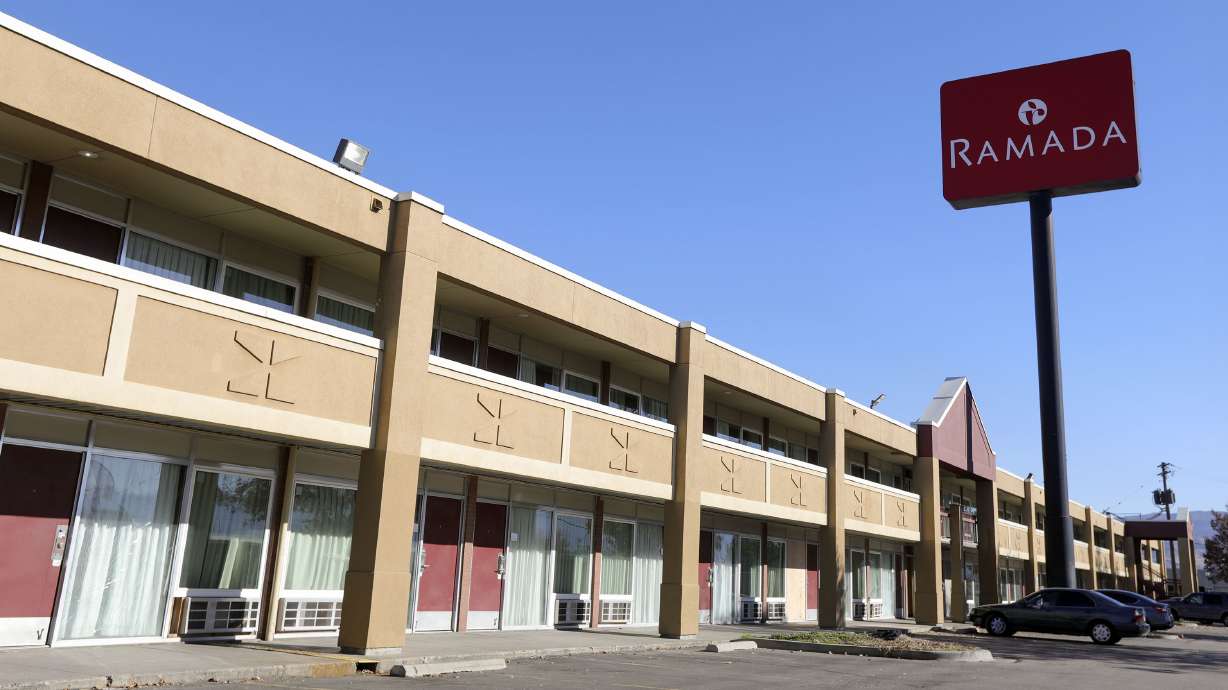Estimated read time: 5-6 minutes
This archived news story is available only for your personal, non-commercial use. Information in the story may be outdated or superseded by additional information. Reading or replaying the story in its archived form does not constitute a republication of the story.
SALT LAKE CITY — When Salt Lake City Mayor Erin Mendenhall issued the temporary moratorium on permanent homeless resource centers, she called for a "more balanced path forward" — a path Salt Lake City's Planning Division is attempting to pave through an overlay zoning district.
Following the temporary ban, the planning division was tasked with coming up with an alternative process to approve future homeless resource centers in Salt Lake City. Members of the planning division were asked to include considerations for districts that already housed permanent resource centers, as well as community concerns.
After a lengthy process, the planning division proposed earlier this month that the Salt Lake City Council adopt an overlay zoning district to regulate future homeless resource centers and homeless shelters. The overlay would be adopted into the zoning code with updates to the existing regulations that apply to homeless resource centers and homeless shelters.
What does the change mean?
The proposed process will be a shift from a conditional use application to an overlay zoning district. Prior regulations allow providers to submit a conditional use application outlining the request, along with security and operation plans. Following the request, a 45-day public notification period is held.
The overlay would still require providers to submit a request in the form of a zoning map amendment outlined with security and operation plans, but adds additional factors to consider when approving a map amendment. Additionally, the process is extended from the 45-day public notice period and decision from the planning commission.
Instead the process will feature a 45-day notice period, a public hearing with the planning commission which will offer a recommendation to the City Council, and then the council will discuss the recommendation in a work session, a public hearing and ultimately, a formal meeting to make a decision.
When the planning division unveiled the proposed process, Salt Lake City planning manager Kelsey Lindquist said that the community engagement process featured stakeholders from all sides. Salt Lake City planning director Nick Norris added that current resource centers would see minimal impact.
'Eager to see something move forward'
"It's been an interesting process, I think an unusual process, in terms of the city putting a complete moratorium on permanent facilities like Salt Lake City has. It's something that's a challenge for sure to have that moratorium in place. So we're eager to see something move forward," said Michelle Flynn, executive director of the Road Home.
While the proposed process signals movement in lifting the moratorium, it may not be the balanced path stakeholders hope for.
The proposed overlay essentially allows any district in the city to possibly house a resource center while also not specifying where those resource centers could be allowed.
"What we're really looking for is guidance from city officials and City Council members as to where in their city they think it would be best to put those kinds of facilities," said Flynn. "Where can we rely on the city to help guide that we know that? If the whole city is essentially open as an option, our concern is coming in should we decide another facility is needed with a specific location without prior having support from the city to say that that's the location that would work best."
Potential roadblocks, concerns for overlay
The lack of guidance regarding potential areas for permanent homeless resource centers and the extended process is a concern.
"We agree with the concerns of City Council members that feel like the west side is overburdened with need and needs a break, but it's hard for us. Oftentimes cost is an issue, fundraising is an issue, having a willing landowner is an issue," Flynn said.
"The offer would need to be contingent upon passing through all the steps with the city to get the approval and that's a yearlong process. I find it hard to imagine a landowner who's willing to agree to a conditional agreement to sell a piece of land with a very uncertainty in terms of whether or not it's actually going to be approved," explained Flynn.
Additionally, she anticipates the extended process would likely be a yearlong process — which can be challenging in terms of being responsive to the need.
While Flynn recognizes that Salt Lake City's leadership is frustrated regarding the role it continues to take in addressing in homelessness, she reiterates the difficulty in addressing the issue.
"It's just one of those things where I think the quandary has been how does that actualize? Like Salt Lake City can't force another city to do something. Nonprofits can't force another city to do something," she said.
Other voices at the table?
While the Salt Lake City Planning Division stated that community outreach included those experiencing homelessness, Flynn encouraged continued engagement with the homeless community.
"The people who are experiencing homelessness need to have a really strong voice at the table. It's important to create those spaces for them to have that input. But when it is a long process whether you're experiencing homelessness or you're in a state of crisis — I think there would need to be a lot of effort from the city to have really clear updates," she said.
The survey gathering community feedback ends Nov. 30.
The Planning Commission will hold a public hearing on Dec. 14 where the public can address the commission regarding the overlay.









